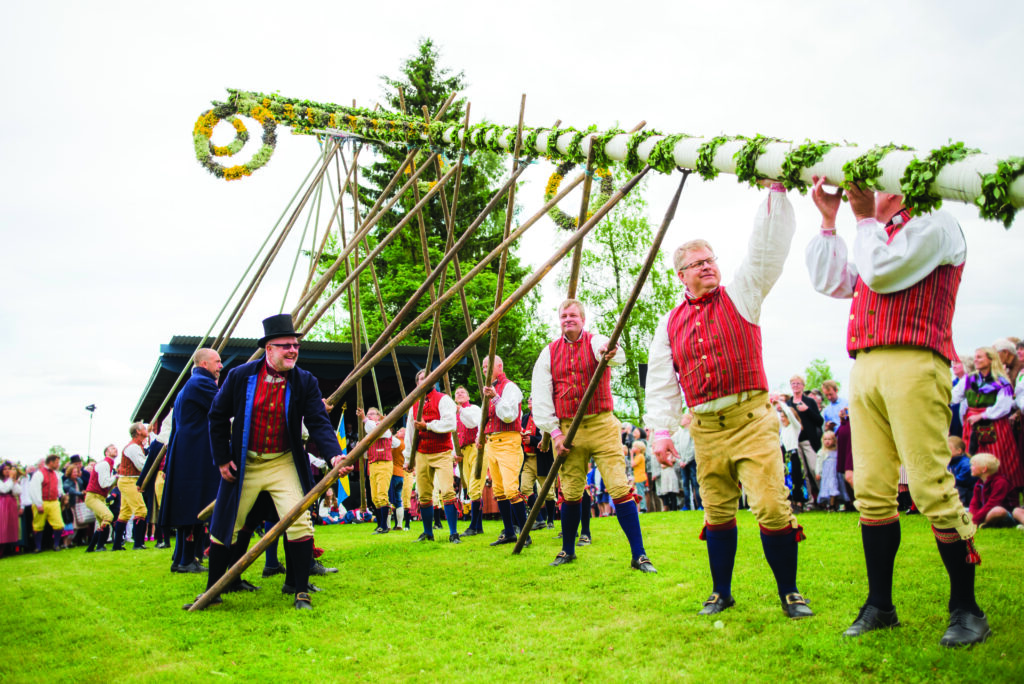Pilgrimage to the Heart of Swedishness
Midsummer is arguably the most magical of all Swedish traditions. In Dalarna, festivities go on for weeks, which means you don’t have to settle for one celebration. Ranging from small, intimate village events to the largest midsommarfirande in the world, there is something for everyone.
In 1872 Artur Hazelius, the founder of Skansen and the Nordic Museum, was standing on the edge of Dalälven river when he saw locals getting into their church boats on their way to mass. Mixed in with their beautiful folkdräkter, some were wearing modern clothes. It dawned on Hazelius that industrialization was threatening every aspect of the old way of life and that it would take a concerted effort to preserve local customs and traditions. He decided then and there to start his famous collections. However, the efforts of one man would not have been enough. What makes Dalarna the quintessential symbol of Swedishness is that its population still puts in that collective effort to live and celebrate culture the old way. At no time of year is that more apparent than at midsummer.
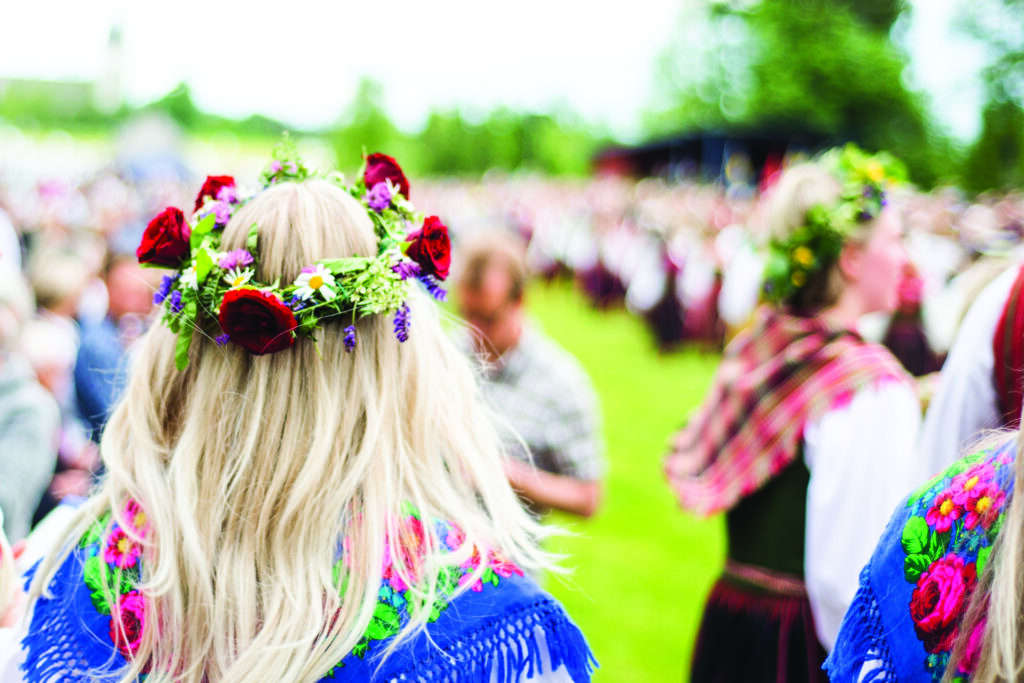
It is early morning on Midsummer Eve. At the top of Björkberget, people have gathered for a garland-making workshop. Some know exactly how it’s done and have come for the companionship of crafting together. Others are figuring it out for the first time and rely on local experts who, eager to pass their knowledge on to the next generation, have brought extra supplies of the most suitable branches, flowers and string. Everyone is welcome and once women and men alike are decked out with flowers in their hair, it’s time for the culinary highlight of the day – Midsummer lunch. Locals return home to share the traditional feast with family and friends. Visitors seek out one of the many local restaurants around Lake Siljan where traditional midsummer fare is offered buffet style. This is a meal that is best taken in the company of others.
Countless types of sill (herring), salmon, new potatoes in dill, pies, Västerbotten mash, and classic strawberry and cream dessert cakes crowd the tables. Most enjoy their meal with some snaps (local spiced vodka) and the traditional drinking songs that proceed each toast. It doesn’t take long until Helan Går reverberates under the open skies.
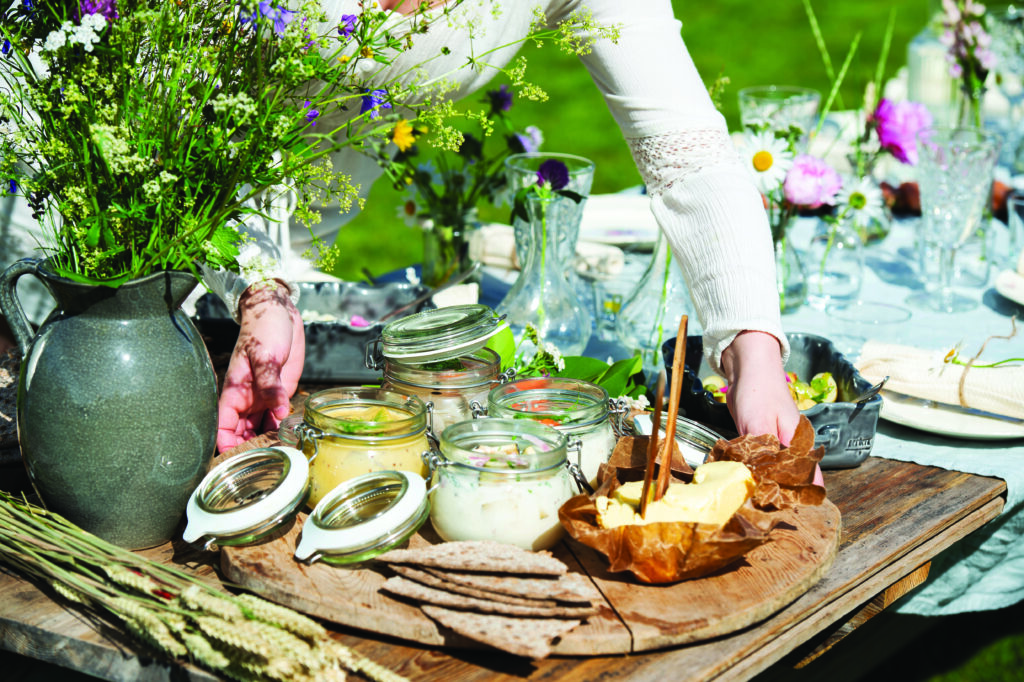
After lunch it is finally time for the first Maypole hoisting. Local paper Siljan Just Nu lists the hundreds of celebrations taking place across the region. Many villages adjust the timing of their events so that when one ends, another starts, allowing for seemingly endless festivities.
In the small village of Laknäs a few families have gathered around the village bystuga. They are wearing traditional folk costumes in honour of their region or parish. The flowers of the surrounding meadows are reflected in the colors of the elaborate folkdräkter with married women wearing particularly colorful bonnets. One gets the feeling of being transported in time. The local spelmän (musicians specializing in traditional Swedish folk music) are absorbed by their violins and accordions. There are no outsiders present, no audience – it is a celebration of heritage in its own right.
Later in the afternoon, the more grandiose and famous celebrations kick off at Klockargården in Tällberg. While the quaint old buildings surrounding Klockargården square lend a timeless feeling to the celebrations, here participants consist of locals and tourists alike. Everyone can help hoist the Maypole and the traditional dances are explained. Many locals don folkdräkt. There are 97 different types of folk costumes in the province of Dalarna alone and even experts struggle to decipher what all the colors and patterns mean, but they combine to create a feast for the senses. As people join hands to take part in the traditional dances, an emcee demonstrates the moves in the middle of the circle. This is midsummer for beginners.
The regional celebrations culminate in Leksand, where the world’s largest midsummer festivities take place. In the early evening a choir and a few dozen spelmän arrive via Österdalälven river in traditional church boats – a type of long and narrow rowing boats. They paddle to the heart of Leksand where they continue on foot, carrying their garlands while singing and playing. Accompanied by the crowds of people who’ve come down to the river to greet them, they make their way to Sammilsdal, a natural amphitheater colloquially known as Gropen, where massive midsummer celebrations have been held every year since 1939. As the Maypole is 25 meters tall and weights 450 kg, hoisting it requires much manpower, but there is no shortage of volunteers. Every year between 20,000 and 30,000 people congregate here to celebrate midsummer. A heart-shaped garland is hoisted, and everybody stands to sing the national anthem. Music and dance ensue, and thousands of people join hands in multilayered rings around the pole to the tune of Små grodorna (Little Frogs), as well as the whole array of classical midsummer tunes like Jänta å ja’, Karusellen, Prästens lilla kråka, Raketen, Ritsch, ratsch, filibom bom bom, Räven raskar över isen, and Sju vackra flickor i en ring, to mention a few.
The bright midsummer night seems endless and magical and in the olden days it was believed it had supernatural powers. Rolling around naked in the dew was supposed to strengthen and heal the body. These days, most people who roll around naked have had too much to drink, but many young people still adhere to the old tradition of ending their night by heading out to the meadows where, in absolute silence, they pick seven different types of flowers to be placed under their pillow as they go to bed. This will conjure dreams of their soulmate. Or so the saying goes.
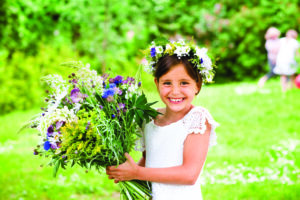
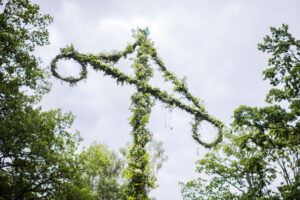
Trip advice
Fly into Stockholm and rent a car so that you can explore several villages around Lake Siljan. The drive from Arlanda airport to Leksand in Dalarna takes about 3 hours.
Accommodation: Visit www.visitdalarna.se/en/stay for a wide range of options including hotels, cottages, camping, and B&Bs.
Don’t miss: Celebrations in Tällberg, Leksand and Rättvik. The latest information about dates and times is posted and updated here https://www.visitdalarna.se/en/midsummer
To pass for a local, wear a folkdräkt. Rentals are available in Rättvik or Mora for about SEK 1,000 (USD 100) for the weekend. Email your size/measurements to info@rattvikshemslojd.se or info@morahemslojd.se to make a reservation.

